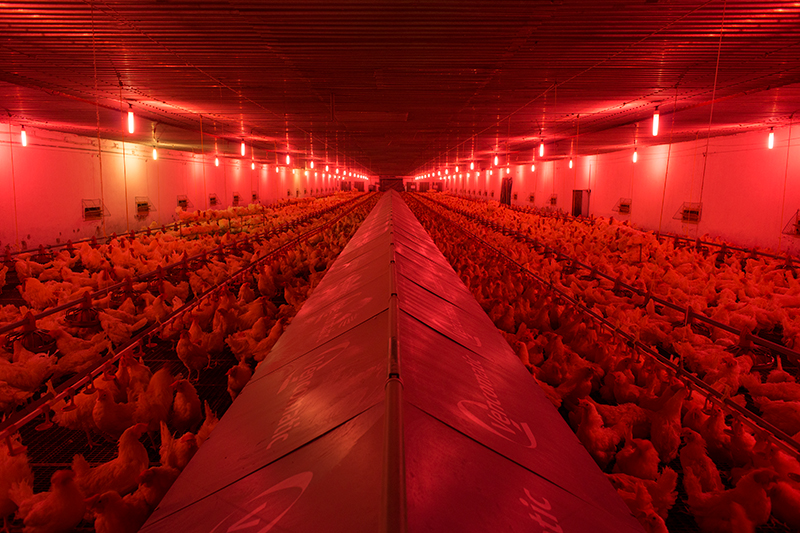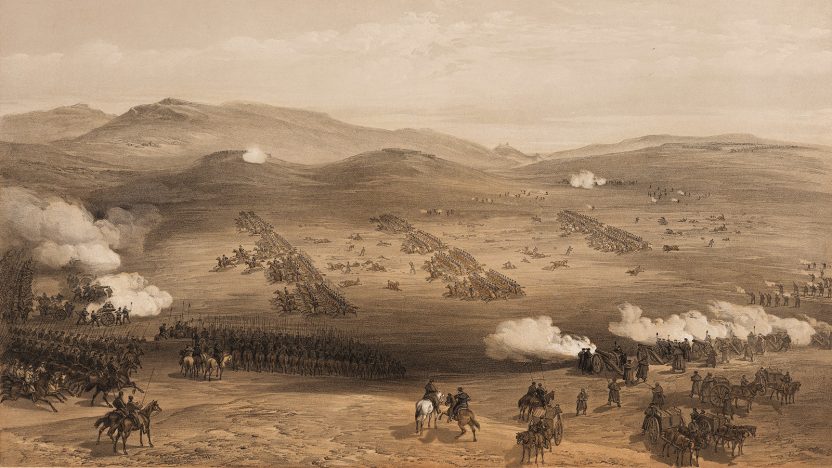How can philosophy help us in this time of crisis?
The sense of paralysis that strangles us stems from the impossibility of deciding in certain situations. But decision is not the only way to be effective.
by Federico Leoni

Doubt, dilemma, words that mean a fork in the path. The counterpart of doubting is deciding, which again means very concretely: I’m going this way, not that way; I’m choosing this side of the field, not the other one. It may be difficult, or even impossible, to decide, but that it is a matter of deciding is not in doubt, I would say with a wink.
We should question whether things consistently and universally work this way, or whether this is just one way of arranging them, one way of coping with them, among many others. Is reality dilemmatic per se? Is doubt the only way to question reality? Many contemporary dilemmas deal specifically with this kind of mega-dilemma.
We struggle to reach a decision in certain situations because the decision is no longer the action that is at stake. We superimpose a two-sided grid on reality, but reality is no longer two-sided. What can we do but decide? Persist in indecisiveness? But isn’t indecision itself the outcome of the same two-sided logic?
The end of war and the beginning of intelligence
Here is an obvious example. The pandemic is not a war at all. Characterizing the pandemic as a war has its communication appeal, rallies people, and achieves a certain level of engagement on set goals and procedures. But it also tends to route action down misguided paths and could even lead to paralysis. A war is a typical two-sided situation.
Its basic structure says: friends over here, enemies over there. To wage war is to identify enemies and to identify oneself as the enemies of those enemies. War has a dialectical structure; each camp is determined by the denial of the other.
Is the virus an enemy? Clearly not. It defies the possibility of placing it all on one side, that of the enemies, which prevents us from placing ourselves all on the other side, that of the friends. The virus is an infiltrator rather than an enemy. So, in this new situation, the field of enemies tends to match the field of friends. Any friend could be an enemy; any enemy could be a friend.
The logic of war is replaced by the logic of spy games, or as we like to call it, intelligence. The fact that contemporary wars are more and more often, and in an increasingly essential way, wars of intelligence is not by chance. There are no longer, or less frequently than there used to be, countries confronting each other and armies fighting each other.
Instead, there are segments of a country that infiltrate segments of other countries. There are battles made up of tiny moves designed not to attack and kill but to weaken, to divert the other’s initiative in the desired direction. The price of all this is that our initiative will in turn allow itself to be weakened and diverted in the direction of the other.
We become to some extent similar to them, and in doing so, we act in our interest, which in turn becomes strangely related to theirs. At this point, what is strictly ours and what is strictly theirs fades into the undecidable, and perhaps into the irrelevant. Of course, this is only one example. This does not mean that it is worth little, that it is limited. It means that it is worth a lot and that it is not at all limited. Therefore, we will soon come back to undecidability and what to do with it.

Using paranoia well
At this point, more than being the grounds of a strategy, the “us” and the “them” become the transitory effects of a tactic that is also momentary, and the very possibility of thinking in terms of strategies vanishes, giving way to a form of generalized tacticism.
But the fact that a field is not organized dialectically does not mean that it is not organized at all. The fact that dialectical thinking struggles to impact a new kind of field does not mean that there is no possible way of dealing with that field.
After all, intelligence is always a bit paranoid, and paranoia embodies the very structure of a set of the operations that we refer to as the service we call intelligence. In other words, paranoia comprises the basic outline of every reading, deciphering, and interpreting process. Seeing something, and wondering what is behind it. Imagining that things always have a background, an implication, a premise, and a consequence.
Knowing that everything is itself and is also a manifestation of something else, therefore it is itself and not itself at all. Acting accordingly, which does not mean simply looking beyond the thing, but expecting that behind it there is also something else that has in turn a background, an implication, a way out.
All good spy films stage this kind of labyrinth and the strange but apparently widespread pleasure of being a part of it. Take an old film like Francis Ford Coppola’s The Conversation (1974), which was all about wiretapping. The world of the protagonist of that film, Harry Caul (Gene Hackman), is made up entirely of voices. No other world could be more unstable and intangible. But the expression “voices” should be considered in its entire semantic scope.
Using extremely powerful microphones and sophisticated equipment Caul manages to pick up words whispered hundreds of meters away, whispers doomed to silence but captured an instant before they disappear along with the secret they bear. But those voices are voices also and above all because beyond them hides nothing but further voices, rumors that only other rumors can confirm or deny, rumors that will speak of other rumors.
“Conversation” is how the world appears to paranoia, that is, to that specific wisdom that consists of feeling that there is also something else resonating in everything and in treating this play of mirrors accordingly. In fact, intelligence and intelligence services know that one can never lay their hands on a voice behind which there are no other voices, on something lacking a background and a further enigma.
Even the word used above in passing, “treating,” is, therefore, a clue not to overlook. If the field at hand does not have a dialectical, dichotomous nature, deciding is not the most effective action, but this doesn’t mean that there is no effective action. An action becomes effective when, by avoiding to decide, to know, to set, it merely treats in some way the threshold that once divided the regions of the field, and that now makes them encroach upon each other in different ways, opening up new opportunities.

Theory and practice of the milieux
Another example is terrorism. I could mention Italian political terrorism, which those who lived in my country in the 1970s are well aware of. But the matter is the same if we think of the global jihadist terrorism of the last two decades. In both cases, we have been faced with a threat that was not coming from a faction clearly in conflict with our own. Hence the panic that overwhelms individuals and groups in these situations.
It became impossible to draw a boundary line, to identify at a glance who is threatening and who is being threatened, and ultimately who “they” are and who “we” are. Terrorists do not wear uniforms, do not field armies, do not move from a territory to which they belong to a territory to which they do not belong. Somehow, they belong to both. Panic is not even strictly a consequence of this situation. Panic is this situation. It is a name for this encroachment of one camp into the other, of this almost overlapping of the enemy with the friend.
How was this situation treated, in which immanence and panic typically intertwine? A treatment that focused on infiltration mechanisms rather than on opposition mechanisms. A treatment that aimed not at striking but at deflecting, intercepting, accompanying. The purpose was not to destroy the other party but to intercept the other. Emails, phone calls, and meetings were traced.
The attention was no longer focused on groups or individuals, in any case on those that could be defined as individual, social, or political subjects and so on. The attention was centered on exchange networks, communication channels, transmission environments, contamination spaces. Infiltration was the only method capable of dealing with a phenomenon whose structure was prone to infiltrating. The administration of a common environment, the tracking of a system of contacts, the management of certain thresholds of porosity between contiguous spaces became effective.
Take the case of Cambridge Analytica (2018), a British consulting firm founded by Steve Bannon and tycoon Robert Mercer, that became famous for using the personal data of 87 million Facebook accounts to influence Trump’s campaigns. The method they used combined data mining, data brokering, and analysis of strategic campaign advertising. In this case, the porosity of the thresholds is quite evident.
So much so that the scandal – with the help of Christopher Wylie, one of the most original whistleblowers – became a watershed event in the general public’s understanding of the value of personal data and, as a result, caused a sharp drop in Facebook’s share price and spurred the adoption of stricter regulations on the use of personal data by technology companies.
A new element comes to the forefront, previously subordinate to groups and subjects. A new element that in the past we would have studied just to get to the groups, and to the subjects. Now that new element, which we could call milieu, environment, unless we also consider it as an intermediate ground, as a mediation space, as an interface of permeability, becomes the very end of the intervention, not the means.
And studying the milieux becomes, in turn, an end, and no longer a means. The present day is made up of milieux. All present knowledge tends to reconstitute its elements and its operations by centering them on milieux rather than on subjects, on capillarizations rather than on identities, on encroachments rather than on definitions or delimitations.

Amazon’s philosophy, in brief
It may sound strange or controversial, but the success of a company like Amazon is rooted in this same general turmoil. The element that Amazon first of all built, and then moved into before the others, and more effectively than the others, is, in fact, its milieu.
Its ingredients are easy to identify. Some segments of electronic communication: there would be no Amazon without a prior and completely independent global diffusion of Internet and email, with respect to which Amazon is completely parasitic. Some segments of very traditional logistics: there would be no Amazon without certain century-old sea routes; or without an almost global network of highways, which incidentally are mostly state-owned.
Some places of connection and relay: the famous warehouses everyone talks about, which on the one hand are very old facilities (in fact they use certain human and material resources present in any nineteenth-century warehouse), and on the other hand have been restructured to become less and less warehouses of goods and more and more warehouses of flows, so to speak.
Amazon’s specific element is its milieu, which however is not a single milieu, but a particularly reckless combination of pieces of existing and hitherto disparate milieux, within a new milieu that is absolutely original and suddenly homogeneous. The parasitic nature of the operation must not be overlooked: the Internet was already there; ships were already there; highways were already there; and so on.
What is essential is the linking of non-essential things. We mustn’t miss the fact that each of these milieux was already parasitic in turn: the information that traveled on the Internet, the goods that traveled on the ships, the cities that the highways connected with other cities were all essential. And we must not forget that here the adjective “parasitic” is not a judgment but the description of an entirely original structure.
Amazon is the emblem of this turning point at which we find ourselves. After that turning point, parasitic becomes essential. Governing the porosity between contiguous environments becomes decisive, not governing the environments themselves. Logistics, from a humble support activity, becomes a kind of universal science of the modern day.

Treating without healing
Let’s return to the virus. We know that the first response strategy to the pandemic was isolation – the closure of a certain area with respect to the rest of the country. In Italy, the first warning light came on when the small town of Codogno became a red zone with respect to its region, Lombardy. Then Lombardy became a red zone with respect to the rest of the country.
In the meantime, patients were herded into hospitals, which by definition are structures enclosed within themselves, isolated from the rest of the city. We also know that this strategy did not pay off, perhaps because it was implemented late in the spread of the virus, perhaps because it was inconsistent with the structure of a viral event.
There was no second virus response strategy. Any strategic thinking simply crumbled into a variety of tactical tweaks. Certain local experiments, certain partial considerations were successful and became established, lacking an overall reference framework. If we were to try to describe this framework, with a somewhat paradoxical approach – given that creating a framework means combining tactics into a strategy – we would have to note that, on the one hand, an attempt was made to keep patients at home as much as possible, while on the other hand, an attempt was made to monitor the places of potential contagion as much as possible.
In other words, it was assumed that the distinction between places of health and places of treatment could no longer be an effective organizer of the field. It was assumed that the distinction between safe and dangerous places was equally obsolete because every place had to be considered a place of transmission, a point of transition from healthy to sick and from sick to healthy.
Therefore, the space of healthy life fully overlapped with the space of sick life. The space of threatened life fully overlapped with the space of safe life. The very meaning of treatment practices changed radically in the light of this new geometry.
It was no longer a matter of treatment to lead a sick life to a healthy one, and illness itself no longer consisted in the fall of a healthy life into the field of sick life. Again, we are faced with a single field, with a structure in which the dimension of disease almost entirely matches the dimension of health, and the dimension of health perfectly matches the dimension of disease.
As a result, to treat does not mean to advance from one condition to another, to cross a threshold, to abandon one territory, and settle in another. To treat means to administer a fluctuation without aiming to resolve it. To keep it within a certain range of variability. To keep it within a certain range, as they say in mathematics: neither health nor disease.
Health means regulating disease; physiology is an interminable fluctuation of pathology. Regulating, here is another typically contemporary action, to be written in place of that monumental but obsolete action that is decision.

Deterritorialization is a territory
For some time, we have been repeating that states have been emptied of content, that they are traversed by supranational, and in this sense global, interests and forces. Consider, for example, the technology Big Five: Amazon, Apple, Facebook, Google, and Microsoft. But beyond these names is a whole galaxy. The power that had centered on defining and mastering a territory is being challenged by other powers, and these other powers are centered on their ability to traverse territories following an entirely different kind of map.
In the past, money was the sign of a value the creation of which took place in close continuity with the land and with a given territory. Raw materials, agricultural products, derivatives of those products: money was a sign of those things. Then it became the sign of a sign of those things, and later the relationship became even more indirect. Nowadays, we create value with signs that refer to nothing but other signs. The creation of value has become detached from the land and the territory and has been distributed according to immaterial geometries, so to speak.
It is no coincidence that these two processes are taking place simultaneously. The geocentric creation of value decreases, so to speak, and the devices of territorial power become empty. Forms of value creation arise which are not bound to territoriality, and extraterritorial and transnational powers are spreading. However, we are not faced with a full-fledged dialectic: closed versus open, territory versus deterritorialization. We should not envision proceeding within the same genre or the same element by successive and perhaps final expansions.
We are faced, rather, with stratification. In a given field, there is a certain layer that involves a certain geometry that we call territorial, based on the election of something that counts as a center and therefore something that counts as a periphery. In the same field, not outside or beyond it, another geometry is overlaid that we call deterritorialization, based on the election of countless centers, each of which is also a periphery for other centers. Thus, each of which is many simultaneous peripheries. And so on.
And then there are the myriad alliances between the territory, or perhaps we should say the territories, in the sense that in the same field multiple centers can exist simultaneously, stratifying multiple peripheries, and deterritorialization, or perhaps we should say deterritorializations, in the sense that, again, in the same field regimes of different signs can multiply the effects of decentralization by stratifying variable, overlapping geometries.
Therefore, territory is also a certain form of deterritorialization. So, every form of deterritorialization is a new form of centering, the design of a specific form of territoriality. Giving some treatment to stratification means seeing and valuing certain thresholds, certain points of passage, certain places of transit between these many territorializations. Or, equally, between these many deterritorializations.
This is what we have seen with the Amazon example. Let’s review it from this new geopolitical or geoeconomic perspective. No Amazon without the Internet, which many claim is the emblem of deterritorialization. No Amazon without warehouses, which by definition must be territorial: deliveries must always reach a certain customer, in a certain house, in a certain neighborhood, in a certain city.
No Amazon without ships, which on the one hand would be said to be free from land and territories, but on the other draw a map of precise routes that are more or less fast, more or less expensive, a map no less solid and binding. Should we see in all this a territorial enterprise? Should we see its deterritorializing trait? Yes and no. Amazon deterritorializes segments of old territorializations, reterritorializing them, so to speak, within itself. Amazon, in its own way, is also a territory.

A catalog of new actions
Let’s summarize. All contemporary dilemmas involve a threshold: health/disease, friend/enemy, essential/parasitic, territory/deterritorialization. These are just a few examples. Their structure, however, is common. Every contemporary dilemma, we may add, is a dilemma in the sense that it is undecidable. That threshold cannot be crossed, and in a certain sense, it is not a matter of crossing it at all.
In a certain sense, the contemporary is made of nothing but thresholds, but of thresholds that are everything there is. Thresholds, in other words, that have become independent of the territories they once divided, and that no longer overlook a space that can be identified as our own, and is preferable, or a space that can be identified as theirs, and is undesirable.
It follows that the dilemma cannot be solved by a decision but can find its treatment in a persistence in place. It is about managing undecidability, and undecidability is not a defect; it is simply a characteristic.
Management is another key word, distinct from decision. It is another eminently contemporary action, as opposed to an eminently modern one. All knowledge today becomes managerial in this profound sense. Management becomes what Aristotle would have called in his language the science of all sciences. Management always means administering a threshold; it always means that it is not a matter of crossing that threshold but of remaining on that threshold.
Let’s try to understand better where the widespread sense of panic and paralysis that strangles the contemporary world comes from. Panic is actually the impossibility of deciding, when it is experienced by someone who believes they have to decide, that their decision is their only chance of effectiveness.
When we abandon this bizarre belief, we open up the territory that awaits those who know how to inhabit the threshold, manage fluctuation, remain on the point of permeability, administer the milieux, leverage the interstices between the many deterritorializations, and create a new logistical creation. We open up a family of new actions and in this sense a new ethic, a new politics, a new economy.
I’ve drawn up draw a provisional catalog of them. Don’t decide, reformulate. Don’t create, compose. Don’t make, recombine. Don’t pursue a goal, regulating a process. Don’t desire something, arrange the circumstances of that something. Don’t decide on a dilemma, revisit its point of onset.
Don’t define, vary. At a certain time, run along a spectrum, at another hold at specific intermediate points. Be wary of transcending, of going beyond. Love immanence, insistence. Treat. Stop. In other words, become Chinese.



